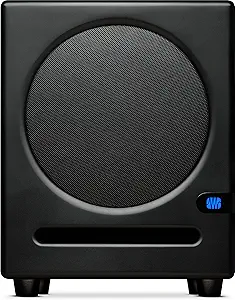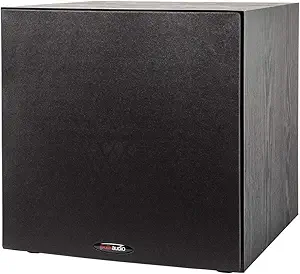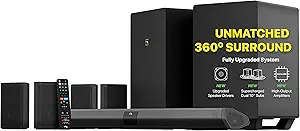The Ultimate Buying Guide for Subwoofers: How to Choose the Best Bass for Your Audio Setup
Overview
Subwoofers are an essential component of any audio system, delivering powerful bass that can bring your music, movies, and games to life. However, with so many different types, sizes, and features to choose from, it can be difficult to know where to start. In this buying guide, we'll take you through everything you need to consider when choosing a subwoofer, including the different types available, key considerations, features to look for, prices, tips, and FAQs.
Types
There are several types of subwoofers available, each with its own advantages and disadvantages. Here are the most common types:
1. Passive subwoofers: These subwoofers require an external amplifier to power them. They are generally less expensive than active subwoofers but require more setup and configuration.
2. Active subwoofers: These subwoofers have a built-in amplifier, making them easier to set up and use. They are generally more expensive than passive subwoofers but can offer better performance.
3. Ported subwoofers: These subwoofers have a port or vent that allows air to flow in and out of the enclosure. This can enhance the bass response but may lead to distortion at high volumes.
4. Sealed subwoofers: These subwoofers have a sealed enclosure that provides tighter, more accurate bass. They are less prone to distortion but may require more power to achieve the same volume levels as ported subwoofers.
Key Considerations
When choosing a subwoofer, there are several key considerations to keep in mind:
1. Sound quality: Look for a subwoofer with a frequency response that matches your audio setup, as well as a high sensitivity rating and low distortion.
2. Power handling: Make sure the subwoofer can handle the power output of your amplifier or receiver.
3. Enclosure type: Choose a ported or sealed enclosure depending on your preferences for bass response and distortion.
4. Driver size: Larger drivers generally produce more bass, but smaller drivers can be more accurate.
5. Impedance: Make sure the subwoofer's impedance matches your amplifier or receiver.
6. Crossover: Look for a subwoofer with a built-in crossover or use an external crossover to ensure a smooth transition between the subwoofer and other speakers.
Features
Here are some features to look for when choosing a subwoofer:
1. Adjustable EQ: Some subwoofers have built-in EQ controls that allow you to adjust the bass response to your liking.
2. Wireless connectivity: Some subwoofers can connect wirelessly to your audio system, eliminating the need for cables.
3. Auto on/off: Some subwoofers have a feature that automatically turns them on and off based on the audio signal.
Prices
Subwoofers can range in price from less than $100 to several thousand dollars. Generally, you get what you pay for, with more expensive subwoofers offering better performance and features.
Tips
Here are some tips to help you choose the right subwoofer:
1. Consider the size of your room: Larger rooms may require more powerful subwoofers to fill the space with sound.
2. Match the subwoofer to your other speakers: Make sure the subwoofer matches the impedance and sensitivity of your other speakers for a balanced sound.
3. Listen to different types of music: Try out different types of music on the subwoofer to see how it performs with different frequencies and styles.
FAQs
Q: Can I use a subwoofer with any audio system?
A: Yes, as long as the subwoofer's impedance and power handling match your amplifier or receiver.
Q: How do I set up a subwoofer?
A: Follow the manufacturer's instructions for setting up the subwoofer, including connecting it to your audio system and adjusting the settings.
Q: Do I need a separate amplifier for a subwoofer?
A: If you choose a passive subwoofer, you will need a separate amplifier. Active subwoofers have a built-in amplifier.
Q: Can I use a subwoofer for home theater and music playback?
A: Yes, subwoofers are great for both home theater and music playback, as they can enhance the bass response in both scenarios.














